Potrebujeme váš súhlas na využitie jednotlivých dát, aby sa vám okrem iného mohli ukazovať informácie týkajúce sa vašich záujmov. Súhlas udelíte kliknutím na tlačidlo „OK“.
ASTM D2765-11
Standard Test Methods for Determination of Gel Content and Swell Ratio of Crosslinked Ethylene Plastics
Automaticky preložený názov:
Štandardné skúšobné metódy pre stanovenie Gél obsahu a Swell Pomer Sieťovaný etylén plastov
NORMA vydaná dňa 1.4.2006
Informácie o norme:
Označenie normy: ASTM D2765-11
Poznámka: NEPLATNÁ
Dátum vydania normy: 1.4.2006
Kód tovaru: NS-21419
Počet strán: 7
Približná hmotnosť: 21 g (0.05 libier)
Krajina: Americká technická norma
Kategória: Technické normy ASTM
Kategórie - podobné normy:
Anotácia textu normy ASTM D2765-11 :
Keywords:
crosslinked ethylene plastics, gel content, insoluble fraction, swell ratio: Crosslinking, Decahydronaphthalene extraction, Ethylene plastics, Gels (fisheyes) content, Insulated wire and cable, Nonreferee method, Referee methods, Swelling, Xylene, ICS Number Code 83.080.20 (Thermoplastic materials)
Doplňujúce informácie
| Significance and Use | ||||||||||||||||
|
Many important properties of crosslinked ethylene plastics vary with the gel content. Hence, determination of the gel content provides a means of both controlling the process and rating the quality of finished products. Extraction tests permit verification of the proper gel content of any given crosslinked ethylene plastic and they also permit comparison between different crosslinked ethylene plastics, including those containing fillers, provided that, for the latter, the following conditions are met: 5.2.1 The filler is not soluble in either decahydronaphthalene or xylenes at the extraction temperature. 5.2.2 The amount of filler present in the compound either is known or can be determined. 5.2.3 Sufficient crosslinking has been achieved to prevent migration of filler during the extraction. Usually it has been found that, at extraction levels up to 50 %, the extractant remains clear and free of filler. Since some oxidative degradation of the material can occur at the reflux temperature of the extractants, a suitable antioxidant is added to the extractant to inhibit such degradation. Before proceeding with this test method, reference should be made to the specification of the material being tested. Any test specimen preparation, conditioning, dimensions, or testing parameters, or a combination thereof, covered in the materials specification shall take precedence over those mentioned in this test method. If there are no material specifications, then the default conditions apply. |
||||||||||||||||
| 1. Scope | ||||||||||||||||
|
1.1 The gel content (insoluble fraction) produced in ethylene plastics by crosslinking can be determined by extracting with solvents such as decahydronaphthalene or xylenes. Such extraction test methods are described herein. They are applicable to crosslinked ethylene plastics of all densities, including those containing fillers, and all provide corrections for the inert fillers present in some of those compounds. 1.2 Test Method A, which permits most complete extraction in least time, is to be used for referee tests, but two alternative nonreferee Test Methods B and C are also described. The first of these differs from the referee test method only in sample preparation; that is, it requires use of shavings taken at selected points in cable insulation, for example, rather than the ground sample required by the referee test method. Because the shaved particles are larger, less total surface per sample is exposed to the extractant, so this test method ordinarily yields extraction values about 1 to 2 % lower than the referee method. The second of the alternative test methods requires that a specimen in one piece be extracted in xylenes at a constant temperature of 110C. At this temperature and with a one-piece specimen, even less extraction occurs (from 3 to 9 % less than the referee test method) but swell ratio (a measure of the degree of crosslinking in the gel phase) can be determined. 1.3 Extraction tests can be made on articles of any shape. They have been particularly useful for electrical insulations since specimens may be selected from those portions of the insulation most susceptible to insufficient crosslinking. 1.4 The values stated in SI units are to be regarded as standard. The inch-pound units in brackets are for information only. ISO 10147 is similar to this test, but is not equivalent. This standard does not purport to address all of the safety concerns, if any, associated with its use. It is the responsibility of the user of this standard to establish appropriate safety and health practices and determine the applicability of regulatory limitations prior to use. Specific precautionary statements are given in Sections , , and . |
||||||||||||||||
| 2. Referenced Documents | ||||||||||||||||
|
Podobné normy:
Historická
1.8.2012
Historická
1.4.2010
Historická
1.8.2010
Historická
1.4.2013
Historická
1.9.2011
Historická
1.2.2011
Odporúčame:
Aktualizácia zákonov
Chcete mať istotu o platnosti využívaných predpisov?
Ponúkame Vám riešenie, aby ste mohli používať stále platné (aktuálne) legislatívne predpisy
Chcete vedieť viac informácií ? Pozrite sa na túto stránku.



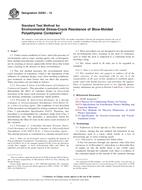 ASTM D2561-12
ASTM D2561-12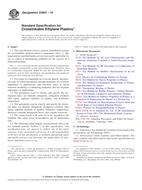 ASTM D2647-10
ASTM D2647-10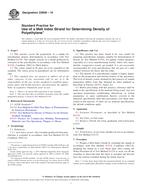 ASTM D2839-10
ASTM D2839-10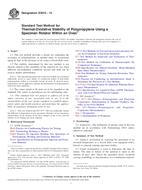 ASTM D3012-13
ASTM D3012-13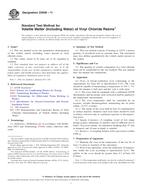 ASTM D3030-11
ASTM D3030-11 ASTM D3124-98(2011)..
ASTM D3124-98(2011)..
 Cookies
Cookies
